Freebies for Busy Teachers to Successfully Start a New School Year
By: edHelper Staff
Updated: Aug 31, 2022

September Monthly Math Assignment
Free Back to School Posters to Decorate your Classroom
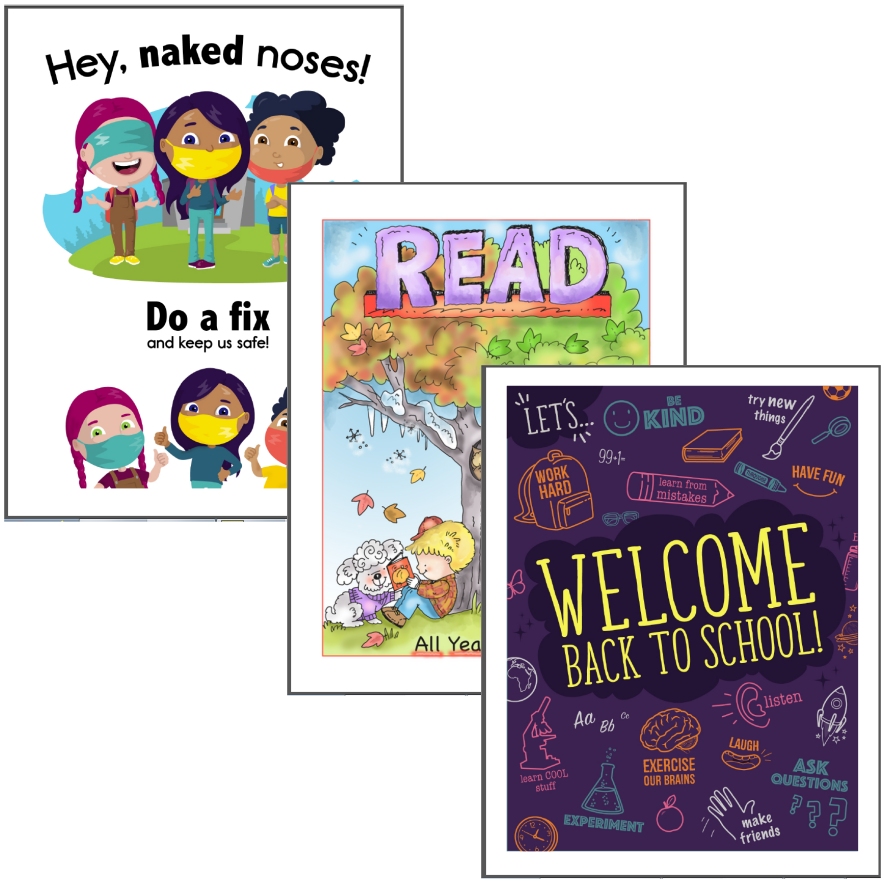
Back to School
Ready or not for Back to School, here it comes! It's been said (and written!) that everything you need to know, you most likely learned in kindergarten. Similarly, everything you really need to know about teaching, you probably learned (or will learn) in the first few weeks that school is in session. Even after 17+ years of formal education, most teachers approach the first few weeks of a brand-new school year as if it was a fresh start and aren't quite sure what to do! This summer may have flown by in the blink of an eye, and whether you are ready or not, the new school year is here! But don't worry-we've got everything you need for a successful start.
Back to School FREEBIEs for Preschool Teachers
Back to School FREEBIEs for Kindergarten Teachers
Back to School FREEBIEs for 1st Grade Teachers
Back to School FREEBIEs for 2nd Grade Teachers
The beginning of a new school year feels like a blank slate. You can create new experiences for your students and for yourself. But where do you begin? Here's a list of twenty questions (and answers) to help you start your year on the right foot. Whether this is your first year teaching or your twenty-first, it's important to get back to the basics each fall. Ask yourself the following questions as you begin to prepare this year:
Free Math Workbook for First Week of School

How will you set up seating in your classroom?
As you map out your classroom, there are some important placements to consider. Do you want your student desks set up in pods for cooperative learning? Would you prefer to have rows for individual work? Maybe you want to allow for flexible seating options and student choice. Once you plan for their desks, consider where you will place yours. Depending on how often you plan to sit, be strategic with where you place your desk and what you can see from its location.
How will you organize materials?
Depending on your setup and available furniture, students may or may not be able to store materials like textbooks and notebooks in their desks. While it may take extra time at the beginning of the year, a little extra organization will save you a lot of time in the long run. Think through the ways you want to organize student materials, art supplies, and class books, and then make a plan that will work best for you!
Classroom Library
You'll want to create a classroom library that is welcoming and cozy. It should be a space where students want to get lost in a good book. When setting up this area, be sure to think through your available books and the best way to organize them. Do you want them sorted by genre or by level? Some teachers opt to shelve them based on the color of the cover rather than by title or author so that students can easily return them to the proper spot on the shelf. How will students borrow and return your books? Do you have a good balance of fiction vs. nonfiction and easy readers as well as books that will challenge your advanced students? If you're hoping to add more books to your classroom library, there are several programs that offer teachers free books. You can also visit local yard sales, look for retiring teachers who may be willing to part with their supplies, and search for other creative ways to gather books so that your students have plenty of options.
Turn in Work
What's your plan for collecting student work? Do you want every student up and out of their seats to place work in a bin? Do you want to walk around and collect it? Will students keep all their work until a designated day? The options are limitless and flexible. Pick the plan that works best for you and your teaching style, but do make sure you pick one! Students thrive with routines. Knowing the how/when/where of something as simple as turning in bell work or a weekly math practice packet will help remove anxiety and set them up for success.
Return Work
What about returning work back to students? Some teachers opt to create classroom mailboxes. All student work, newsletters, and parent communication are distributed to the boxes. At the end of each day, students take turns emptying their mailboxes and bringing the paperwork home. Other teachers prefer handing out work during different times of the day and having students collect items at their desks. Much like the collection of materials, the best strategy is the one that will work best for you. Take advantage of the first few weeks of class and ensure that students learn these routines and procedures.
How will you store student devices?
What about all those digital devices? If you don't have a charging cart and students aren't bringing home their devices each afternoon, what is the best way to store and charge them? One budget-friendly organization idea is to use dish drying racks. When placed inside large plastic tubs, the dish drying racks keep the devices separated, safe, and easy to see. A surge protector can lay alongside the tub for easy charging, and the tub makes moving the devices manageable.
What is your daily schedule?
Now that you've thought through some of the back-to-school organization basics, what will your day-to-day schedule look like? When creating a daily schedule, start with what you know. Begin with bell times that will start and end the day. Then pencil in your weekly specials. When will students head to PE? Is there a set day/time for music or visiting the school library? What about recess and lunch breaks? Once you have these things listed, you'll be able to better look at your available blocks and decide how to best plan your instruction. As you pencil in your blocks for math, reading, writing, science, and social studies, make sure you are also being intentional about time for brain breaks as well as time for movement. Research shows how important these are for success! Posting your daily schedule can also help students succeed. Just as adults appreciate seeing an agenda near the start of each meeting, our students like knowing what to expect throughout the day. This consistency and structure eliminate anxiety and support organization.
How will you start each day?
Many teachers opt to start their day with bell work. This not only provides an excellent opportunity for students to review (or preview) material, but it is also a fantastic classroom management strategy, as it encourages students to be on task the moment they enter the room. You may want to consider math review packets, independent reading, or journaling options. Be careful to make sure that your bell work is not busywork. Use the time purposefully and allow it to be an intentional start to the day or review from previous lessons.
Build Community
Set the stage for a successful year by building a caring, cooperative community. Foster a sense of belonging by greeting students by name at the door. Try hosting morning meetings, sharing random acts of kindness, and allowing classmates to praise each other's efforts.You can also calm beginning-of-the-year nerves and help put everyone's minds at ease with this selection of beginning-of-the-year read-alouds.
How will you manage student behavior?
Part of building a healthy classroom community is making sure that you've created a place and a space where students feel safe. This cannot happen if students don't understand and follow behavioral expectations. Plan for how you will track and reward positive behaviors within the class. Many teachers like to use visual aids to help students track their progress toward desired rewards. It might be a jar of marbles that results in a classroom party once full or tally marks on the whiteboard, which are earned by making great choices or receiving compliments from other adults on campus. You'll also want to think about ideas regarding individual student behavior or behaviors for learning communities, pods, or small groups within your classroom. When you are considering student behavior and your classroom management style, remember that the best way to correct misbehavior is to prevent it. Using solid, well-understood procedures and fostering healthy relationships with your students will go a long way when it comes to promoting desired behaviors and eliminating disruptions.
How will you document student work and behavior?

Don't allow documentation to overwhelm you! While it is important to keep a paper (or digital) trail of grades and behavior, there are several options available to keep track of these necessary items. You can use traditional behavior binders and graphic organizers and paper gradebooks. If you'd rather document digitally, you create your own using Google Sheets. Digital tools are also available to track behavior and missing work. You can use QR codes for missing homework or document behavior on apps like Class Dojo or Teacher Kit.
What is your plan for parent or guardian communication?
Developing consistent parent communication is a great way to support student success in your classroom. You may want to offer homework hotlines, weekly newsletters (in print or digitally), or create a class website. If parents or guardians have questions or need to reach you, what is your preferred method? Be sure to share this with them at the beginning of the year. Some important communication tips:
a. Reach out for the right reasons: While you may have to reach out to a student's supportive adult regarding behavior or an academic concern, make it a habit to also reach out to congratulate them for great effort, kindness, or to celebrate a recent success.
b. Document all contact: It is easy to save email communication, but if you send/receive paper notes or make phone calls home, be sure to keep a log. This documentation will help you make sure you are connecting with all your students and can be useful if you ever need to provide support for an issue or concern.
c. Boundaries aren't bad! Teaching is an all-consuming profession. While it can be hard to walk away on a Friday afternoon or after an exciting day in the classroom, set the expectation early in the year that emails or phone calls received after a certain time each day will be responded to the following school day. This will not only put parents' minds at ease when they don't hear back from you immediately but will help prevent teacher burnout.
Math with Critical Thinking Puzzle Worksheets
Try these small critical thinking with math workbooks that will challenge kids to think creatively.
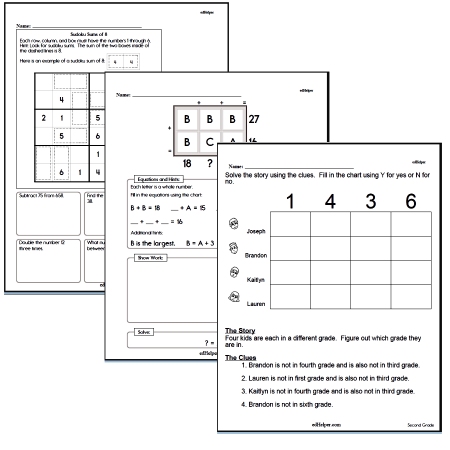
What about bathroom breaks?
It's inevitable. Your students will need to use the restroom. Lots! How will you manage restroom breaks during class? Rather than a sign-out sheet, consider using a bottle of hand sanitizer on a student's desk to indicate they've gone to the restroom. This helps keep track of students and keep germs away! Alternatively, you may want to consider one of these creative restroom pass options. Quick printable and reusable passes are another great option for not only restroom breaks but trips to the nurse and office as well.
STEAM
It's full STEAM ahead with these STEAM workbooks.
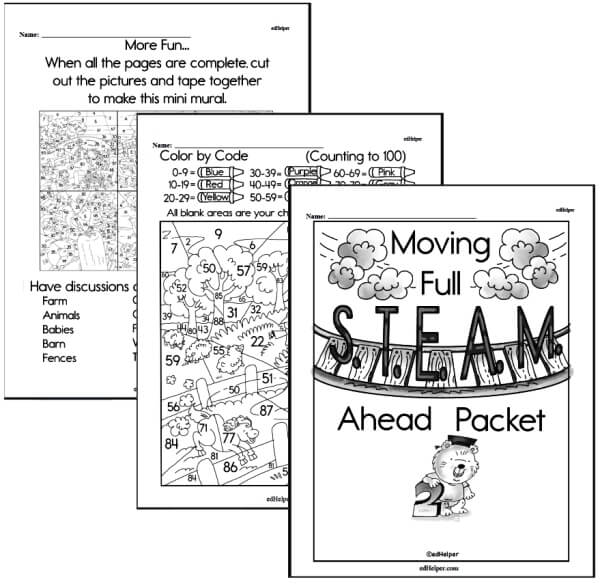
How will students line up and leave the room?
It may seem simple, but having students line up and walk quietly through the hallways of your school building can be quite a task! How will you approach that this year? Some teachers opt to use traditional strategies like alphabetical order or assigning each student a number. Others have a different line leader each week and a caboose who brings up the rear. Lining up and leaving your classroom can be purposeful! It can help build a sense of community. You can identify students who are sitting quietly or actively participating and praise their behavior and invite them to line up. You can use it as a friendly competition and have the first group answer a math fact question to line up. You can use this time as an opportunity to informally assess student understanding from the most recent lesson by having them turn in an exit ticket to line up or share one thing they learned. The possibilities are limitless! Select a strategy that works for you, but don't be afraid to modify the procedure as the year goes on.
Teach Coding
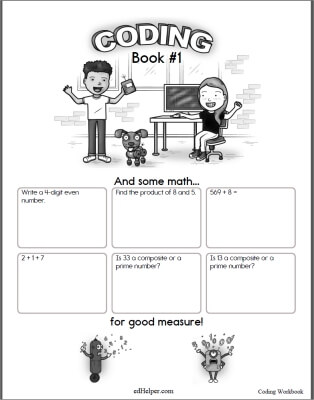
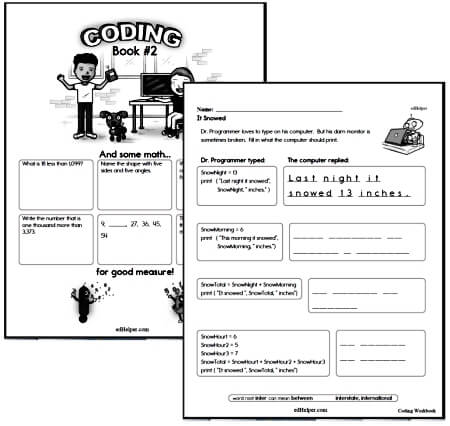
Will you have student jobs?
Student jobs are awesome! They not only help give students a sense of pride and purpose when it comes to their role in your classroom community, but they should (in theory!) make your life as the teacher easier! Check out this list of classroom jobs for classroom career ideas for your students. You can assign jobs, have students apply for them, or create a simple rotation system. You also have the option of creating a full classroom economy where students earn money for their weekly responsibilities and then have the opportunity to spend that money by buying real estate (a new choice of desk) and even paying taxes!
Reading Comprehension Worksheets
Print these free reading comprehension worksheets to use with your kids. They feature a mix of stories, science, and social studies to hold their attention. A few pages of math are included in-between the comprehensions so that kids will be able to keep their focus.
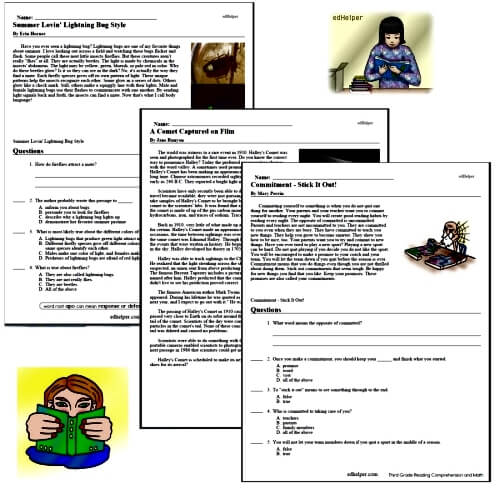
How will you create student groups?
Your new classroom will soon be filled with unique students. What is the best way to create cooperative learning groups? You can always start with random groups and switch to heterogeneous or homogeneous teams as you get to know your students. It can be beneficial to create groups with similar academic abilities if you are hoping to offer small group instruction, remediation, or enrichment. Another option is to create groups based on interest, learning style, or knowledge of the topic you're about to study. Finally, you can allow students to select their own groups. Regardless of how you opt to group your students, do your best to mix up the groupings often. Your students will be advocates for each other's learning! And they will learn best when they have the option to learn from each other.
What is the plan for early finishers?
Rarely will you ever have your entire class finish a project or an assignment at the same time. Some students will zip through the activity, while others will need more work time. How do you support both? You can have pre-set expectations for your early finishers (silently read a book, work on unfished work, quietly help a classmate) or you can offer them [LINKEND: https://www.scholastic.com/teachers/articles/teaching-content/top-5-ideas-early-finishers/ ] choice activities[LINKEND:].
Mind Bending Critical Thinking Puzzle Workbooks For Kids
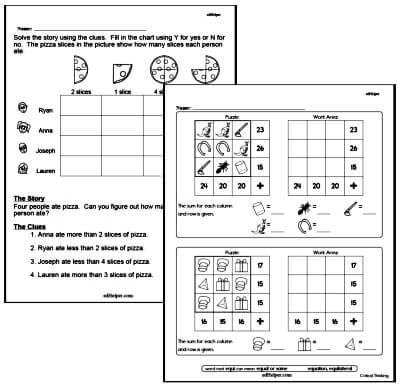
What is your plan for calling on students?
You may have a few eager learners this year! These students are quick to raise their hands, anxious to be called on, and seem to have an answer for every question. But what about the rest of your students? How can you make sure that you equally call on everyone? How can you ensure everyone has a chance to share? Some teachers opt to use "fair share" sticks. He or she will write each students' name or number on a stick and then randomly select sticks to identify a student to call on. This strategy or others like it (randomizing apps, etc.) can get rid of implicit teacher bias. Be careful, however, that your "fair share" approach is truly fair. While a stick or an app can be a good place to start, make sure that you have scaffolded supports in place to help random students feel successful if they are asked to answer a question they may not know.
How can you best support absent students?
Even if your class is collectively striving for the coveted perfect attendance award, it's inevitable; you will have students who are absent. While missing work can be completed, it's hard to replicate all that occurs during class hours. These few suggestions may make the make-up work process easier.
a. Create a "Welcome Back" Binder: This can be a binder or manila envelope that is placed on the absent student's desk first thing in the morning. As you pass out papers, neighboring students can place the student's copy in the binder, so all of the work is in one place.
b. Consider Online Resources: If you have created a class website, blog, or are using a resource like Google Classroom, daily work can be posted there so that absent students don't have to wait until they return to get started. If possible, consider posting links to resources like Khan Academy or YouTube that may have recorded mini lessons of your covered content. You can also use online gaming resources like Let's Play Math to support students in reviewing their math skills while away from class. An ill student may not feel up to completing a full packet of work, but he or she may have the energy to spend a few minutes playing math games!
c. Select a Secretary: Ask various students to work as the student secretary on days when classmates are absent. Ask for their permission to take a photograph or make a copy of their notes so that they can be given to the classmate. This does two things-it not only helps provide multiple resources for the absent student, but it also fosters a sense of responsibility for the note-taker. He or she may be more diligent in their own work due to knowing that a classmate will need to view it.
Will you create bulletin boards?
Decorated bulletin boards not only make your classroom more inviting, but they can also be extremely purposeful. Take advantage of your classroom wall space and create interactive stations, post student jobs, and display student work. Many websites offer bulletin board ideas and printables that make it easier to create engaging and thematic displays throughout the year.
What is your plan for transitioning between subjects?
Transitions between subjects, learning activities, recess, and lunch breaks happen all day long. If not well planned out, this "in-between" time can quickly cost you a lot of learning time. Plans and procedures help limit student misbehavior while still giving a much-needed brain break from learning. These tips for smooth transitions in the classroom will help!
a. Start at the Beginning: Give your students a five-minute warning before transitioning to the next subject or activity. Something as simple as "In five minutes, we are going to be moving on to math, so begin wrapping up" will mentally prepare them for the change.
b. Roam the Room: Wander the room as you prepare to transition so that you can be in closer proximity to those students who may tend to get a little too excited. Your presence will help! You can offer specific suggestions to these students and help ease them into the next project.
c. Make the Transition Fun: Making the "in-between" fun may limit off-task behavior. Rather than simply "walk to the rug," why not have students hop like a bunny, tiptoe, or walk like a silent zombie? Play a quick round of Simon Says to select groups to join you up front first or use call-and-response chants to get everyone's attention.
d. Point Out the Positive: As you see students transitioning well, celebrate it! There's no need to name individual students, rather point out the collective number of students who are ready. If you have 12 students who have their new supplies out and are ready to go, challenge the class to see how quickly the remaining students can join them.
Will you assign homework?
Each school or district will likely have a different philosophy about homework, so when making your plan be sure to consult with your colleagues. A widely accepted standard is that students should have no more than ten minutes per night per grade level. Any more than that may be more detrimental than beneficial. When used correctly and focusing on quality over quantity, homework can be helpful! Make sure that your assignments are purposeful, efficient, and doable. Consider assigning purposeful math printables, a reading log for independent reading, or an extension from the day's lesson. If you prefer, you can try assigning alternate activities as homework . While these may not be tied to specific standards covered in class, they can show students their core subjects in the real world and create an excitement for learning and application.
Missing Digits Math Worksheets with Mixed Math Practice
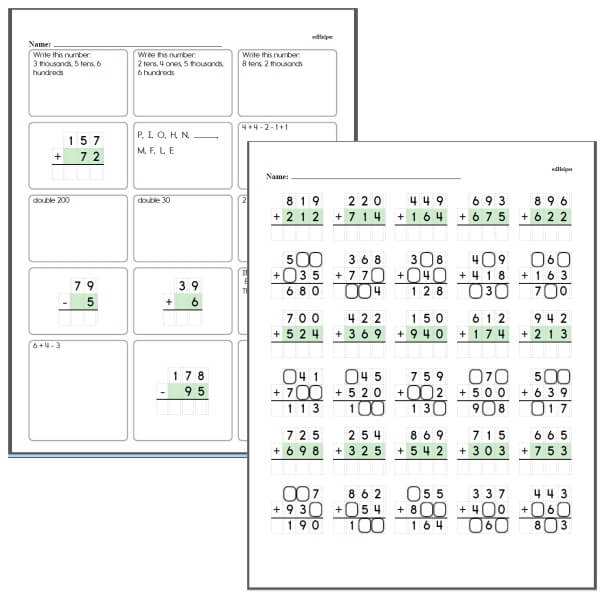
What is your dismissal procedure?
You've kept them safe all day, and now, it's time to make sure they make it home safely. Dismissal can feel like a daunting (and sometimes chaotic!) part of the day, but it doesn't have to be.
a. Step One: Make sure you know how each of your students will leave the building. Do you have bus riders, walkers, and car riders excited to meet their parents patiently waiting in the carpool pick-up line? A classroom chart or list on a clipboard can help ensure that you know where everyone is headed at dismissal.
b. Step Two: Make sure the room is ready for the next day. Enlist your students' assistance in stacking chairs, cleaning up centers, sharpening pencils, and wiping down the board. These may be responsibilities assigned to certain students as their weekly job, or small groups may be assigned to tackle each task.
Step Three: Send them out in style. Here are 25 ideas for creatively and calmly ending the day[LINKEND]. Why not try a different option for each day? You can rotate through the list every few weeks.
First Day of School
Here are 8 Creative Ways to Make the Classroom More Fun on the First Day of School.
Embrace this new year as your opportunity to create meaningful community in your classroom. Your students will enter your doors filled with expectations, and you have the awesome responsibility of supporting them in their learning journey! As you use these questions and answers to guide the start of your new school year, be confident that your students will learn a lot this year. They will leave your classroom wiser than when they entered it. May they also leave knowing they've been cheered for, supported, believed in, and celebrated! Here's to a brand new and successful school year for all!





















